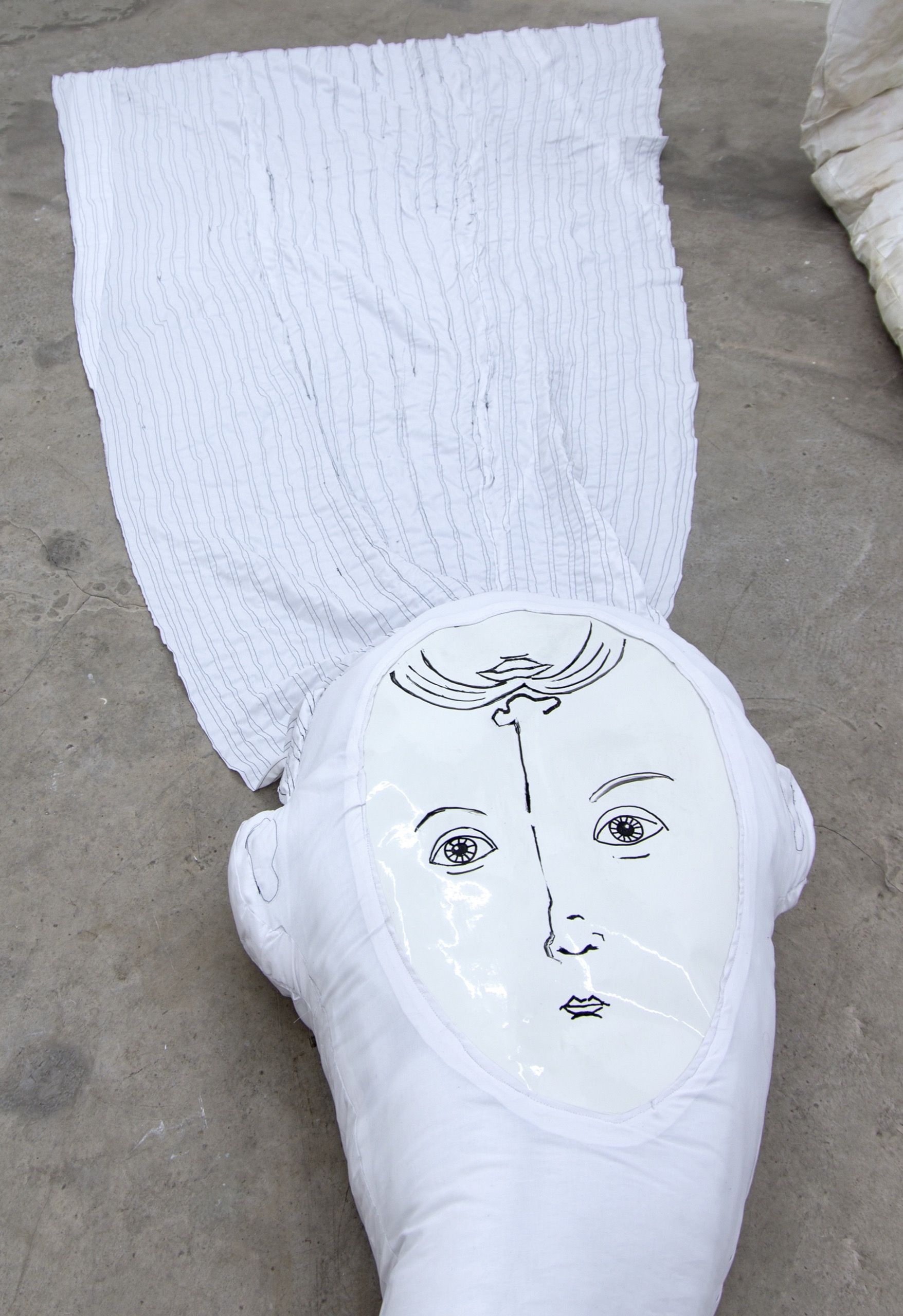
Growing up in a suburban household in Illinois, Mindy’s practice is inspired by crafts and objects that belong to the American middle-class vernacular. Through her works, Mindy looks at how we live with these objects, how we interact with them, and how we embed them with our own history and interpretation.
Mindy Rose Schwartz lives and works in Chicago. For the past 10 years, Mindy has been teaching a course called Extreme Craft at the Art Institute of Chicago that focuses specifically on how the definition of ‘craft’ has been changing.
Living Content: Where did you grow up and how did you decide to become an artist?
Mindy Rose Schwartz: I grew up in Skokie, Illinois. I decided to become an artist in fourth grade, when I accidentally dropped the picture I had done that day in summer camp onto the dirty floor of the bus, which then took me on a long nauseating ride home.
LC: You employ in your practice a set of skills that you acquired growing up, such as stitching, beading, knitting and so on. Why is it important for you to highlight the relationship between mass-produced objects and craft?
MRS: Certain objects and processes represent a particular time and place, personally and culturally for me. In my mind, there was an equivalence in the way they acquired the residue of daily life that was going on around me.
LC: How did the show at Queer Thoughts come together?
MRS: I’ve been working on parallel bodies of things over a long period of time. I think the show at Queer Thoughts helped me figure out how to put a punctuation mark at the end of a couple of sentences.
LC: Can you tell me a bit about your work process, the materials you use and the significance they have for you?
MRS: I work best with a deadline! The materials and processes I use have to match what makes sense with the meaning I’m trying to get across.

LC: You address craft in your practice - an activity that involves skill and that is ultimately perfected through repetition. However, there are also elements in your work that play with this idea of deskilling, such as the simple shapes and the occasional rough surfaces. Can you tell me more about this tension that you’re exploring through this aesthetic?
MRS: In my case repetition does not equal perfection. To be good at crafts, to make something useful that people want and can use involves skill and patience that I don’t always have. So when I’m using certain processes, it’s not that I have a particular affinity or ability for that process. I am trying to take stock of what I know how to make and question what circumstances conspired to my knowing how to make it. If it contributes to the meaning of the work for it to have a more finished look, I hire experts to help me.
LC: When we met in September, at the opening of your show at Queer Thoughts in New York, we talked a bit about how craft has a weird temporality to it, especially when used in the context of contemporary art. Do you see craft - as it is used in contemporary art - to be nostalgic?
MRS: I don’t think you can avoid that association even though nostalgia and sentimentality are often used as a kind of put down, a less serious or respected notion. Nostalgia for me isn’t about romanticizing the past.



LC: I find it fascinating that you teach a course called "Extreme Craft" at the School of the Art Institute of Chicago. What does this involve? Why do you see it as being important for a younger generation of artists?
MRS: I developed the course about ten years ago for the Sculpture Department at the School of the Art Institute of Chicago. The class looks at the ever-changing concept of “extreme”, how perceived “levels” of workmanship support or diminish meaning, and how lived experience with collectible or decorative objects take on unique meanings over time. We are all always born into a new technological age. What I see as being important for a new generation of artists is to be a sieve and try to reflect what they know.
LC: That’s fantastic! And what are you most excited about in the near future?
MRS: In October, I have a show coming up at Galerie Balice Hertling in Paris, curated by Sam Lipp and Miguel Bendana. Some things are related to the work in my Queer Thoughts show, but it also seems like the start of something new.